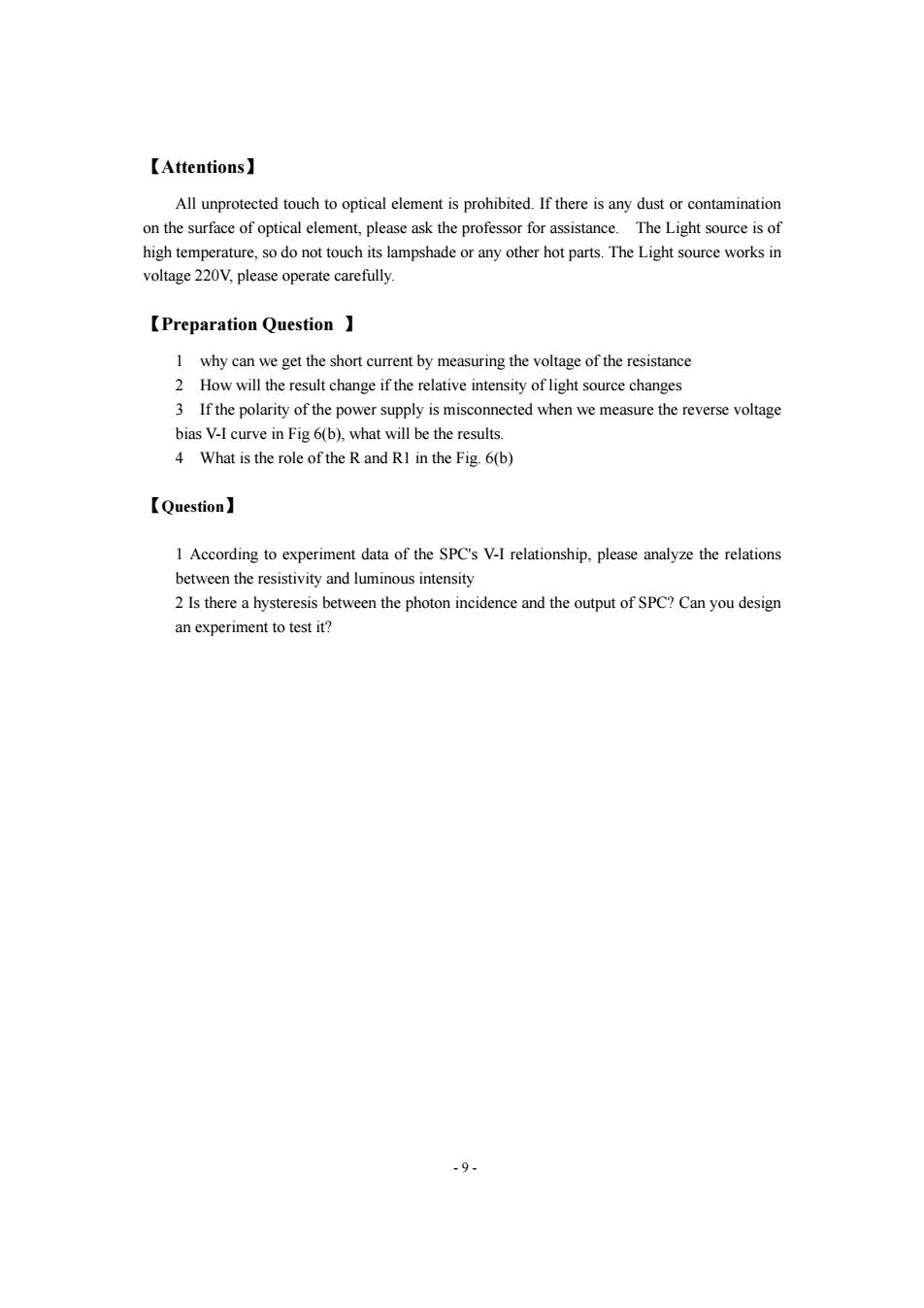正在加载图片...

【Attentions】 All unprotected touch to optical element is prohibited.If there is any dust or contamination on the surface of optical element,please ask the professor for assistance.The Light source is of high temperature,so do not touch its lampshade or any other hot parts.The Light source works in voltage 220V,please operate carefully. 【Preparation Question】 1 why can we get the short current by measuring the voltage of the resistance 2 How will the result change if the relative intensity of light source changes 3 If the polarity of the power supply is misconnected when we measure the reverse voltage bias V-I curve in Fig 6(b),what will be the results. 4 What is the role of the R and Rl in the Fig.6(b) 【Question.】 1 According to experiment data of the SPC's V-I relationship,please analyze the relations between the resistivity and luminous intensity 2 Is there a hysteresis between the photon incidence and the output of SPC?Can you design an experiment to test it? .9-- 9 - 【Attentions】 All unprotected touch to optical element is prohibited. If there is any dust or contamination on the surface of optical element, please ask the professor for assistance. The Light source is of high temperature, so do not touch its lampshade or any other hot parts. The Light source works in voltage 220V, please operate carefully. 【Preparation Question 】 1 why can we get the short current by measuring the voltage of the resistance 2 How will the result change if the relative intensity of light source changes 3 If the polarity of the power supply is misconnected when we measure the reverse voltage bias V-I curve in Fig 6(b), what will be the results. 4 What is the role of the R and R1 in the Fig. 6(b) 【Question】 1 According to experiment data of the SPC's V-I relationship, please analyze the relations between the resistivity and luminous intensity 2 Is there a hysteresis between the photon incidence and the output of SPC? Can you design an experiment to test it?